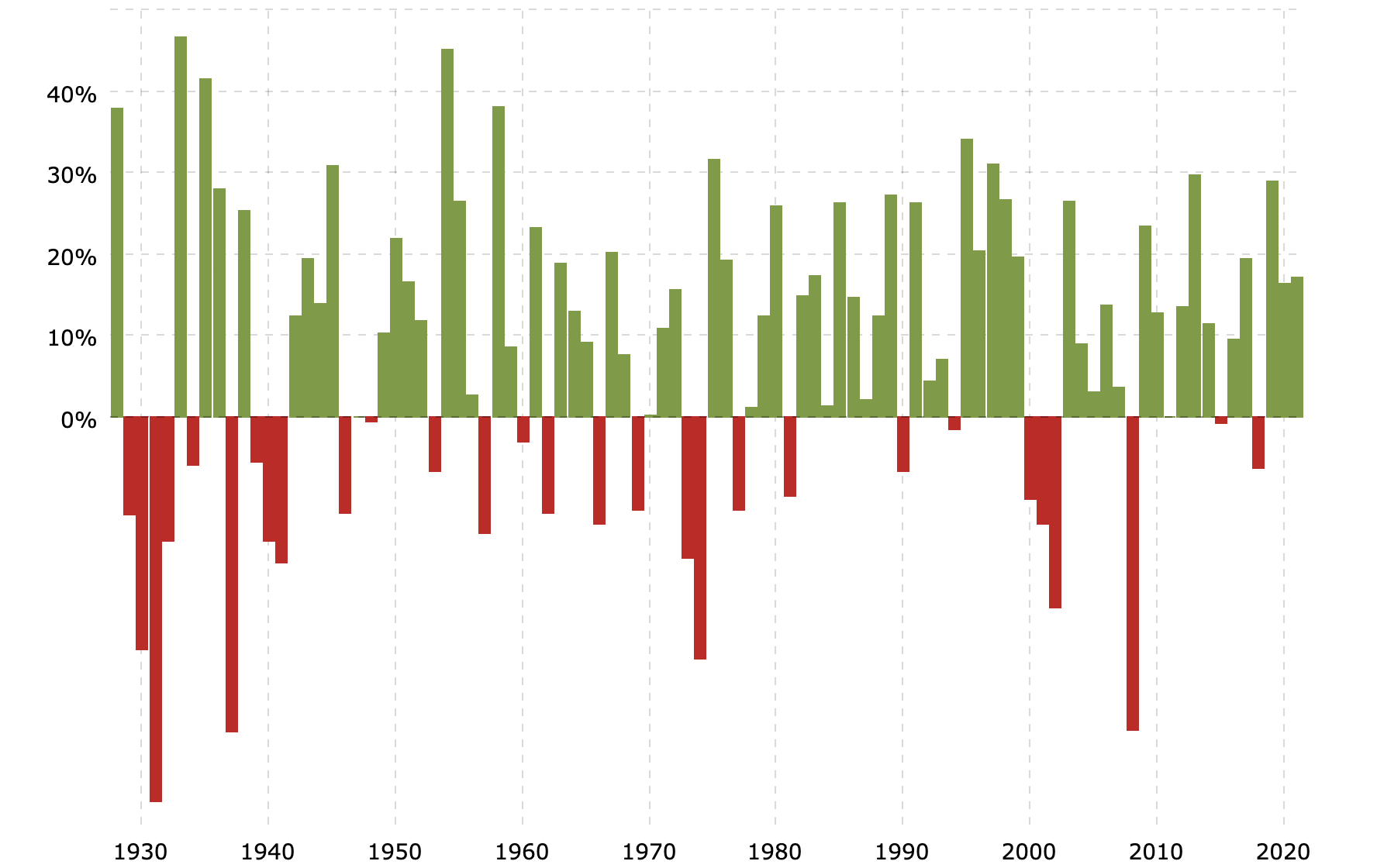We all have it, the fear of getting into something new and unknown, especially when it means losing the money you worked so hard to earn. I've had this fear for years until I realized how much I am missing out on.
Fear kept me outside the investment world and potentially away from reaching my financial goals. After I started learning more about the economy and researching individual businesses, my anxiety slowly faded away.
I also found that having a solid investment plan and knowing what to do when things go sideways will give you more confidence in your investment decisions.
Why do people fear stocks?
People fear investing in stocks because the returns can be unpredictable. Stock markets move up and down on a daily basis and they may pose a substantial risk of losing money when people don't have enough knowledge about how the markets work. People make bad decisions, get carried away by emotions, and lose money because of situations outside of their control.
When bad news comes, everybody panics. 90% of people lose money in the stock markets, but they also take high risks by investing in penny stocks or trade based on rumors or tips to try to get rich quick. Many investors often make the mistake to buy the stocks high and then sell them low when they get carried away by emotions. This is exactly the opposite of what they should really do.
How risky is the stock market?
All financial assets that can net you a decent return are risky, however, it's important to know what to expect and to be prepared when things don't go according to plan.
The stock market can be volatile and unpredictable, which makes it risky in the short term. Diversification and thinking long-term can significantly reduce the risk of losing all your invested capital. For example, investing in a broad, diversified portfolio of stocks like the S&P 500 over an extended period of time can yield on average roughly 9-10%.
Analyzing the annualized returns of the S&P 500 since 1928, we can clearly see that the market has lost more than 30% of its value once every 30 years, and if you add all the returns together, the gains will outweigh the losses.

While timing when is the best time to invest is impossible, it's important to try to keep control of your emotions, analyze the markets and seize the new investment opportunities that arise by purchasing shares at more attractive prices. While fear dominates the markets, good companies will always do well in the long term.
How to start investing?
Here are a few steps to follow when you start your investment journey:
- Create an investment strategy
- Open an investment account
- Do your research and due diligence
- Start small, keep adding and think long term
- Diversify and reduce risks
Create an investment strategy
When you have a plan, you will get more confidence in your decisions. Don't worry if the plan isn't perfect in the beginning. Once you have seen how your investments progress and you get comfortable, you can start refining your plan over time.
Start by setting up your goals, for example, try thinking how much money you would be happy with when you retire. If you're saving for the long term then you may be able to go for a higher-risk investment. If you are closer to retirement, then you may need to consider a more conservative approach to protect your capital.
Open an investment account
There are countless brokers out there and the process to open an account is easier than ever.
A few things to look out for is to compare the available brokers in your country and see which ones have the best offers. For example, I like having a broker that has low fees and is regulated by a financial authority like FCA in the UK.
Some brokers also have introductory bonuses like free shares when you create an account and deposit the minimum amount.
I personally use Freetrade and Stake for my investments in the UK. They both offer very attractive fees and Freetrade also offer a Stocks and Shares ISA for £3 per month.
If you decide to open a Freetrade (UK only) or Stake (UK, Australia, NZ) account, you can get a free share worth up to $200 by using my referral link:
Stake (UK, Australia, NZ): https://hellostake.com/referral-program?referrer=valjohannesd795 - You will get a free share for up to $150 if you sign up using this link and deposit a minimum of £50.
Freetrade (UK ONLY): https://magic.freetrade.io/join/val-johannes - You will get a free share for up to $200 if you sign up and make any deposit to get the free share.
Do your research and due diligence
When you invest in any business, it is very important to do the research and due diligence on that company first. There are two ways when analyzing a stock. Fundamental analysis and technical analysis.
Fundamental analysis is based on valuation metrics and other information to determine if a stock is fairly priced.
Value investing is the art of buying stocks which trade at a significant discount to their intrinsic value.
Technical analysis is based on the idea that the stock's price contains all available information and that prices generally move according to specific patterns on the price chart. Investors often analyze the stock price history to try and predict future price movements.
The difference between the two is that the fundamental analysis is intended for the long term whilst the technical analysis is usually used by traders in the short term. I personally believe that focusing on fundamental analysis and investing in good businesses at fair prices is the way to beat the market over time.
Another very important aspect is to always have the bigger picture in mind. If a company is operating in an industry that is growing fast, you will have a much higher chance for your investment to be profitable.
Start small, keep adding and think long term
It's perfectly fine to start with a small amount in the beginning. Invest a sum that you can afford to lose while you learn. With time, as your balance grows you will get more comfortable. Make sure you stick with your plan.
A good strategy to follow is "dollar cost averaging" or DCA. This strategy consists in investing equal sums of money at regular intervals regardless of the price or what's going on in the markets.
The idea behind this strategy is that it's almost impossible to time the market and catch the best prices all the time. By contributing the same amount on a regular basis you also average the price you bought the shares for. This strategy does not require as much attention to the market and the prices.
Since you are making regular contributions no matter what the market conditions are, this strategy is ideal for keeping out the emotions from the decision-making process.
Diversify and reduce risks
Don't put all your eggs in one basket. Investing all your money in just one company or one asset comes with very high risk and your returns depend solely on the performance of that business. If you made the wrong decision could mean losing a lot if not all your money.
To protect your investments try to diversify in businesses across different industries. According to the famous value investor Benjamin Graham, you should pick between 10 to 30 stocks if you want to diversify your portfolio.
If you're now thinking that investing in multiple different companies takes a long time to research, you are not mistaken. Investing in more and more companies will also mean spending more time on research. An alternative would be to consider investing in one or more index funds like S&P 500 rather than buying individual stocks. By choosing an index fund or ETF you will gain access to a wide array of companies selected and managed by professionals.
Keep calm and don't get discouraged
Patience is a virtue, it is even more important when investing. When your investments lose value, don't get discouraged. Stock prices rise and fall and people panic. Often those are the best opportunities for you to invest in great businesses at a much lower price. If you've chosen a good strategy and have made your research and due diligence for the assets you invest in, you're more likely to recover the losses and succeed in the long term.
Learning how to invest will take a bit of time. Read various investment articles, diversify your portfolio, and don't invest more than you are prepared to lose to minimize the risks. Once you have a plan and know your risk, you'll grow your wealth quicker than you realize.





